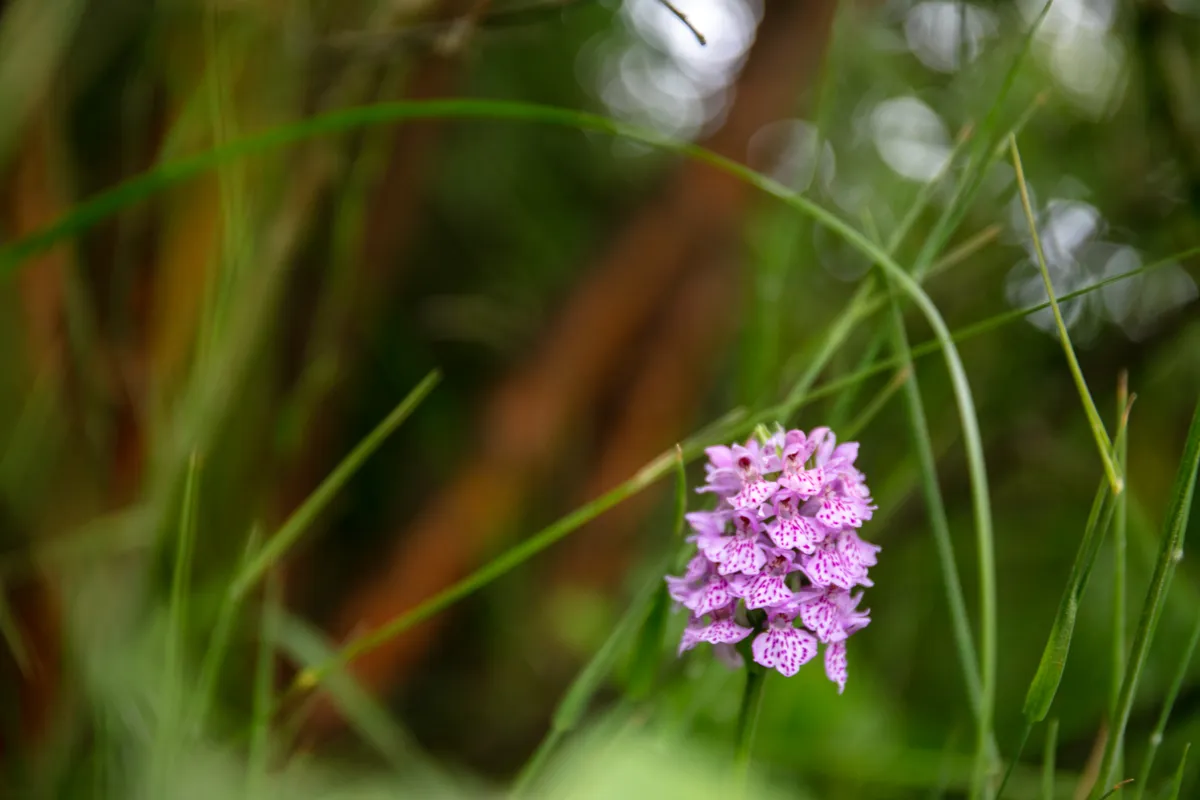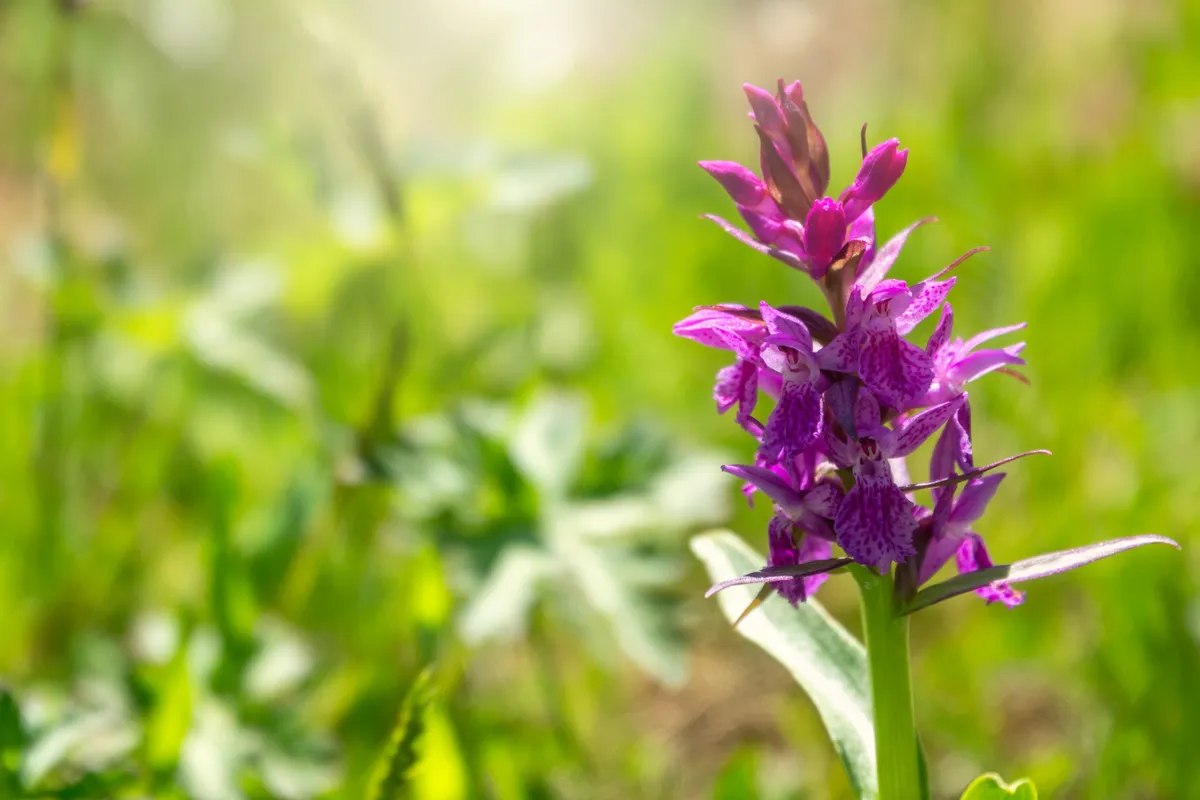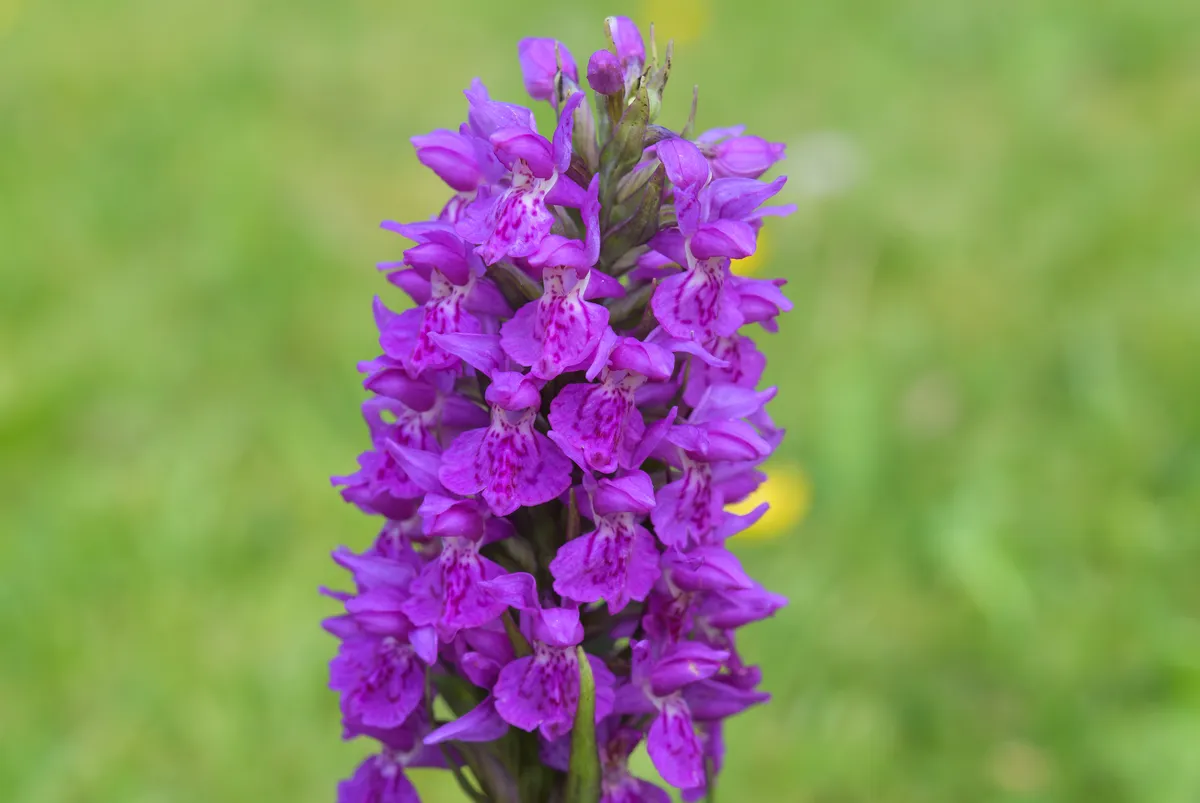Orchid hunting is always a thrill, sometimes with a hint of magic. Their dust-like seeds, carried on the wind, mean that these charismatic wildflowers can appear almost anywhere, usually growing on calcareous soils, grassland meadows and disused landscapes.
There are a staggering 28,000 species of orchid worldwide, and between 52 and 57 native species of orchid in the UK (numbers vary from source to source). Speaking very broadly, orchids flower from mid-spring through to late-summer, though specific flowering times and durations vary from species to species.
This identification guide explores 15 of the more widely distributed UK species, from the early purple orchid and pyramidal orchid to the marsh helleborine.

15 common orchids of Britain
Early purple orchid, Orchis mascula

The early purple orchid can be found througout the UK. Usually the first species to bloom, often in bluebell woods. Attracts bees but inflorescences offer no nectar reward; by the time visitors discover the deceit, they’ve already pollinated the flowers.
Common spotted orchid, Dactylorhiza fuchsii

Common spotted orchids have dark spotted leaves and tapering inflorescences in shades of pink, marked with purple lines. Grassland and open woodlands, often in disturbed habitats like road verges, sometimes in large numbers.
Bee orchid, Ophrys apifera

Bee orchids are unmistakable. Flowers mimicking female bumblebees evolved to fool male bees into attempting to mate, so pollinating the flower, but British populations are almost always self-pollinated. Widespread, extending its range northwards.
Fly orchid, Ophrys insectifera

Fly orchids are widespread in southern England, Inconspicuous and easily overlooked in woodland and chalk downland. Small flowers, resembling flies with prominent antennae, are pollinated by digger wasps that attempt to mate with them.
Marsh helleborine, Epipactis palustris

Marsh helleborines are large, exotic flowers in showy spikes, in marshy habitats. Sometimes in large numbers in coastal dune slacks around England and Wales. Visited by flies, solitary bees, wasps and small beetles.
Pyramidal orchid, Anacamptis pyramidalis

Pyramidal orchids have a dense cone of flowers, the colour of strawberry ice cream, lengthens to become cylindrical with age. Limestone grassland and coastal dune slacks. Pollinated by moths, including day-flying burnet moths.
Bird’s nest orchid, Neottia nidus-avis

Bird’s nest orchids are strange, caramel coloured plants with no leaves or green chlorophyll, totally dependent on soil fungi for nutrition. Uncommon, scattered sporadic populations, usually in mature, shady beech woodland, sometimes old hazel coppice.
Greater butterfly orchid, Platanthera chlorantha

Greater butterfly orchids grow on unimproved calcareous grassland and woodland. Tall, graceful spike of widely-spaced, long-spurred white flowers rising from a pair of leaves. Conspicuous at dusk, when its powerful scent attracts long-tongued moths.
Fragrant orchid, Gymnadenia conopsia

Fragrant orchids are sweetly scented, strongest towards evening, attracting butterflies and moths that drink from a long nectar spur behind each flower. Calcareous grassland throughout the UK, often in large numbers in old limestone quarries.
Green-winged orchid, Anacamptis morio

Green-winged orchids are daintier than early purple orchid, with unspotted leaves. Sepals and petals form green-veined bonnet over each flower. Pollinated by bumblebees. Sensational when in large numbers amongst cowslips in old pastures.
Common twayblade, Neottia ovata

Tall spike of green flowers resembling a tiny human, rising from a single pair of broad leaves. Visited by many small insects. Widely distributed in woodland and grassland on calcareous soils.
Frog orchid, Dactylorhiza viridis

Frog orchids can be found in short limestone and chalk grassland, sometimes in large numbers but easily overlooked, with its diminutive stature and greenish-purple flowers. Occurs throughout the UK. Visited by small beetles and wasps.
Northern marsh orchid, Dactylorhiza purpurella

Northern marsh orchids have robust spikes of intense magenta flowers, sometimes in spectacular numbers in marshy habitats and industrial brownfield sites. Hybridises with spotted orchids, producing intermediates. Replace in the south with similar southern marsh orchids.
Broad-leaved helleborine, Epipactis helleborine

Broad-leaved helleborines are the commonest helleborine, whose range extends into southern Scotland. Tall spikes of pinkish-green flowers, pollinated by wasps attracted by sweet nectar. Woodland edges, grassy verges, cuttings of disused railways.
Heath spotted orchid, Dactylorhiza maculata

Heath spotted orchids are similar to common spotted but daintier, favouring acid habitats like heathland and bogs. The broad lower lip of flowers has been likened to a frilled skirt with delicate purple embroidery.
